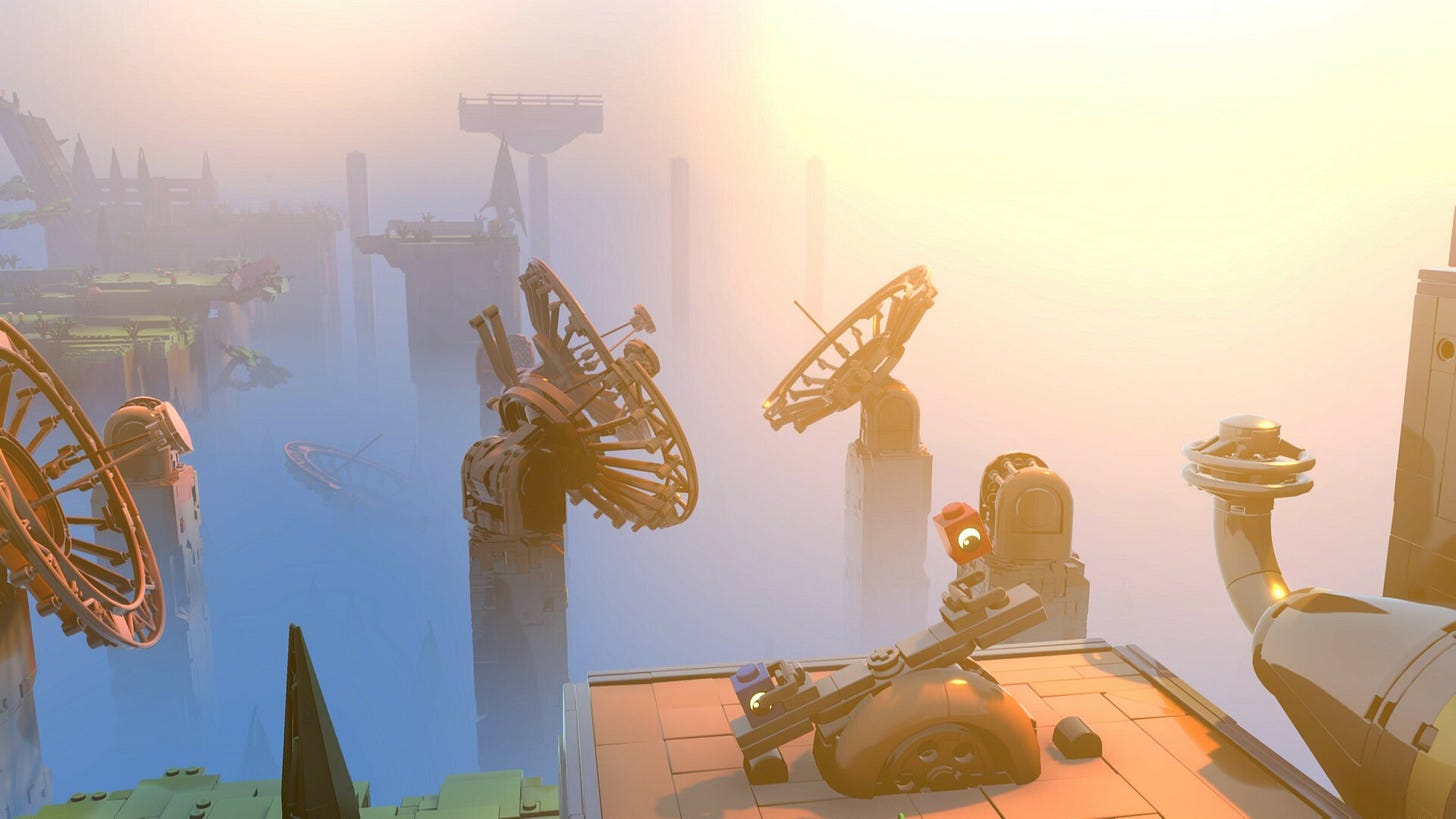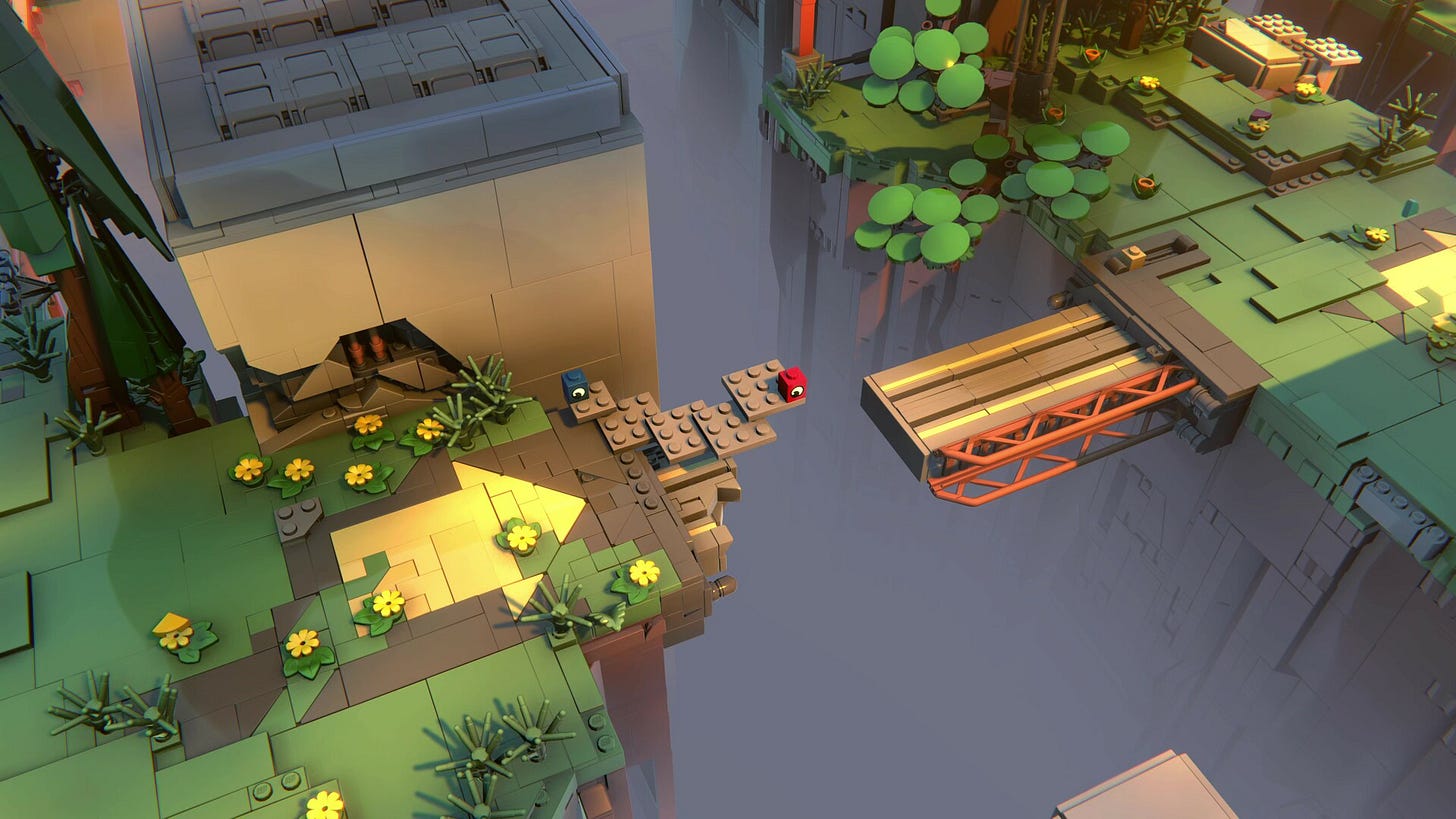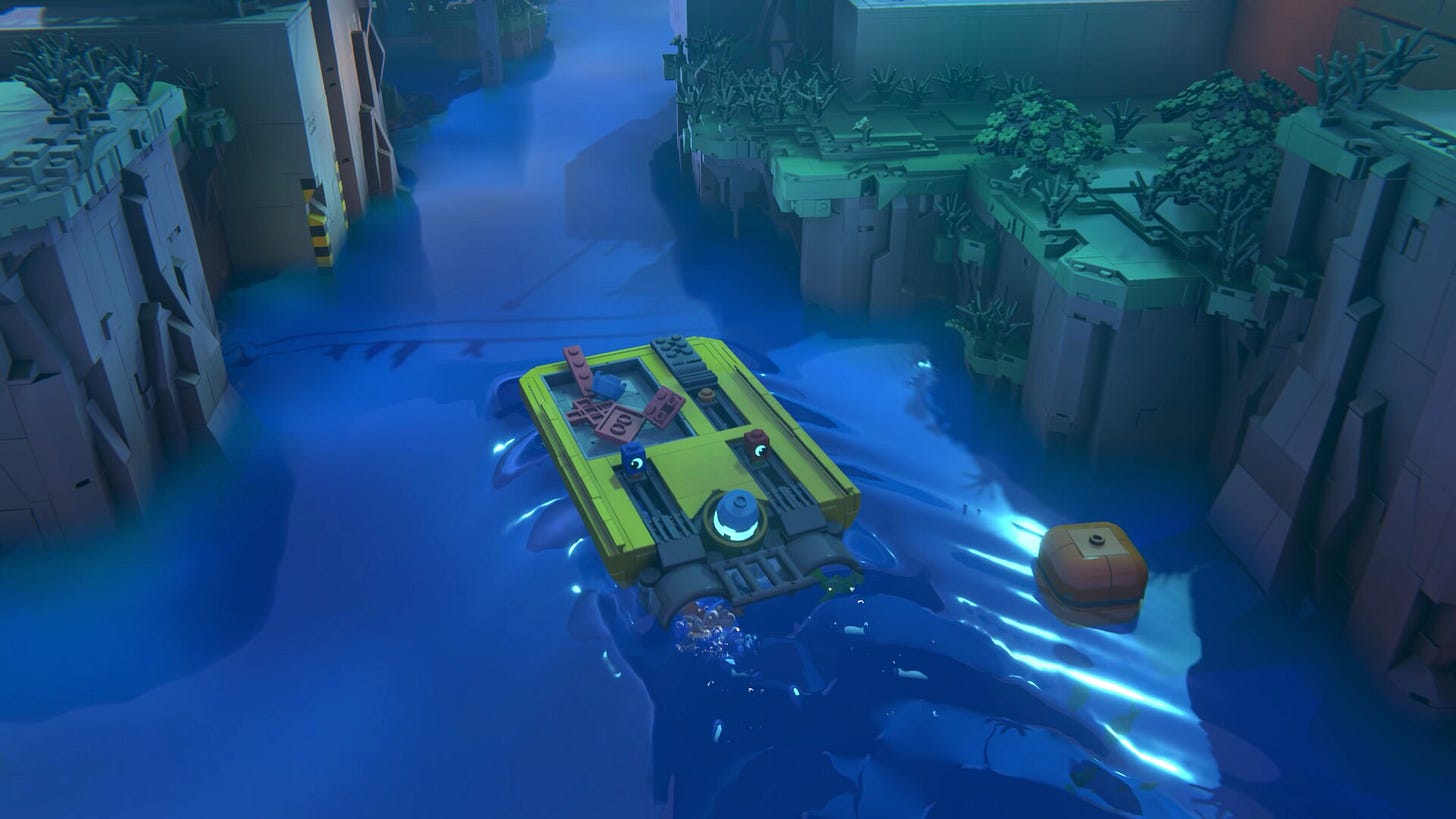The Quiet Sadness of Playing Lego Voyagers With a Five-Year-Old
Making it to the end of a video game, even one meant for families, is often a journey all its own.
I first saw the trailer for LEGO Voyagers during Summer Game Fest 2025, an annual quasi-marketing event of watching video game trailers.
Not only was it a nice change of pace from everything else—buffered on the other side by Nicktoons & the Dice of Destiny before transitioning back to Lies of P— but it also represented an opportunity to play a game with my daughter. I was charmed by the delightful art style and deceptively simple gameplay that was shown in the trailer.
There are a few video games that I feel comfortable playing with my 5-year-old. Games that are too violent are instantly off the table. One of the biggest hits in my household (outside of the Mario Kart franchise, due to its accessibility options) was Astro Bot. Astro Bot has a great aesthetic about it, with its bright colors and cute characters. But ask my 5-year-old to pass any level outside of the first one and there’s instant frustration. She has more fun running around the open world area “hitting all the bots.”
We’ve tried to play co-op games before. Most notably, my daughter loves to play the Switch launch title Snipperclips, which is often a source of frustration for me due to how complicated it can be. Although I’m interested in them, I don’t believe she could handle something like It Takes Two and Split/Fiction, not only for their complicated gameplay, but also for their more mature storylines.
LEGO Voyagers is billed as “a 2-player co-op adventure about LEGO bricks, friendship, and play.” It carries an ESRB rating of E-for-everyone, so playing LEGO Voyagers wouldn’t be a question of appropriate content, but rather a test of skill. The ESRB isn’t rating whether or not the game will be too complicated for someone to play, but it is solely based on the content itself.
What’s it like playing LEGO Voyagers with a 5-year-old?
From the very first seconds with LEGO Voyagers, the game presents the players with a choice: Will they choose the Red Block or Blue Block? This small choice reverberates throughout the entirety of LEGO Voyagers, but you wouldn’t know it from that selection screen. My daughter was presented with colors and she chose Red simply because it was closer to pink. If she could’ve selected pink, she would’ve, but those two colors are fundamental to not only playing LEGO Voyagers, but the narrative the game wants to tell.
Throughout the 30+ chapters of LEGO Voyagers, the players collaborate in solving puzzles.
Many of the puzzles are about finding some random LEGO pieces lying around and creating bridges. Some blocks are color-coded in one of three different colors—red, blue, yellow. As you can imagine, your block corresponds to the color of the object on the map, while the yellow areas are areas where the blocks must be positioned to advance the game. Color recognition is not a problem for my brave adventurer. But the platforming challenges were another story.
LEGO Voyagers operate in a 3D space. It’s often difficult to see exactly where your piece is supposed to jump towards. The dev team found a neat workaround for this within the world of their game: by pressing a button near a LEGO piece, your block clicks into place. A lot of these jumps are also color-coded with yellow to help guide players. Not only does it help with some of the perspective issues, but it also works within the confines of the LEGO universe. Great.
The problem is that asking my daughter to roll, jump, move towards, and then click into place to make a jump was difficult. Asking her to make a series of almost seven of these jumps in succession? That meant that I had to look out for the safety of my Nintendo Switch controller before it flew across the room. What would end up happening is that I would complete the section with my block, she’d hand me her controller, and I would complete it once again with her block. Thankfully, LEGO Voyagers doesn’t have enemies or timed sections, so we could complete each task at our leisure.
Remember those puzzles I mentioned about making bridges? Dad would often go about collecting those pieces, while my daughter would be rolling around the map, keeping herself entertained. One way she’d do that is a button dedicated to allowing the LEGO blocks to communicate with one another, making delightful little sounds. When I would eventually complete the puzzle for the two of us, I’d often hear, “How did you do that?”
Thankfully, there is more to the gameplay of LEGO Voyagers than simply making bridges. Eventually, there’s a section where one of the blocks is expected to hold down a switch, so that the other block crosses a platform successfully. Sensing an opportunity to be mischievous, I let go of the switch right when she was crossing, sending her flying across the screen. It brought me great joy, but needless to say, that didn’t sit well with her. To make amends, I proceeded to let her send me flying across the screen, many, many times, while she laughed hysterically to herself.
“The problem is that asking my daughter to roll, jump, move towards, and then click into place to make a jump was difficult. Asking her to make a series of almost seven of these jumps in succession? That meant that I had to look out for the safety of my Nintendo Switch controller before it flew across the room.”
Some of her favorite parts of the game are when the players are asked to control vehicles together, whether it’s a boat or a car. The boat felt pretty intuitive, and I was able to give her directions so that I’d be able to pick up the items we needed. The car, not so much. After struggling with that for about thirty minutes, I followed some advice I saw online that suggested ditching the car and completing the task by rolling around as always. That worked out much better for my sanity.
Spoilers for LEGO Voyagers follow, but this is not a story-based game.
The final act of LEGO Voyagers asks the blocks to assist in a space mission, as one of the blocks, Blue, will be going up to space in a rocket ship. Can you see how this is a problem? As we were preparing for the Blue Block to go to space, we were tasked with a series of tests that Blue had to complete to be mission-ready. Most of them were simple enough, but when it came time for one test, where both players needed to work as a team to practice landing a spaceship, I was almost ready to quit. That test was beyond her patience, and I ended up having to use both controllers in tandem to solve it.
After completing an underwater puzzle (I completed it myself the first time, but when we played again in anticipation of writing this piece, she was able to figure it out herself!), it was time to prepare for the final departure. She understood that she wasn’t going to go to space.
At first, she wondered why she couldn’t go, but then there was a tinge of sadness in her realization that Blue was going to the skies. My heart almost broke when she said, “Bye, Daddy” as Blue entered the space shuttle alone. LEGO Voyagers then asks Red to complete a few more tasks, including launching the rocket, but she wasn’t sure she wanted to go through with it.
The epilogue of LEGO Voyagers is bittersweet as Red sets up a way to communicate with Blue over the radio, but I’m not sure that makes up for leaving Red behind. When I mentioned that next time she could play as Blue, she immediately wanted to start playing again.
I told her I was going to be writing a piece about us playing LEGO Voyagers together and asked if I could interview her. I wanted to share the interview below:
What was your favorite part of Lego Voyagers?
“The part when I got to blast you off [the platform]”
What’s the silliest way you failed or fell off a cliff?
“When you fell off a cliff, and you kept on trying to build. It was so funny.”
What would make the game better?
“To make the game better, if there were a unicorn and you both rode it. [The Bricks could go to different places.] Red went to unicorn land, and Blue went to outer space.”
You don’t think that making both players go into outer space would make the game better?
“No. Only both of them go to different lands.”
Do you think this would be a good first co-op game for your friends?
“Yes.” “Dad, can we start playing that tonight?”
Maybe. One more question. Did you like the ending?
“Yes. It made me very sad.”
Why did it make you sad?
“Because you went up to outer space and I didn’t. But at least I got older in the end [Red grows from the time of the ending to the epilogue]. The next game will be me in outer space.”
(We played the last few chapters again later that evening. She decided to pick Red again.)
Would I recommend playing LEGO Voyagers with a 5-year-old? Probably not. It’s a little too complicated, at least for my child. The platforming was where the problems started, but it continued to get more difficult throughout. A lot of the reviews of the game from major outlets complained that the game was enjoyable, sweet, but also that the length was a detriment because it was way too short.
Let me tell you, when playing with a 5-year-old, it was long enough.
All that being said, I will take fond memories away from completing LEGO Voyagers with my daughter. It was the first game we completed together, from beginning to end. It brought up difficult emotions as she dealt with the disappointment of not traveling to outer space with her dad. But beyond all that, I’m just excited that I got the experience of completing a video game with her. It was a precious experience.







I had a similar experience playing with my 5-year-old boy, Max, right down to the boat being enjoyable and the car not so much--as well as that spaceship landing puzzle turning into a maddening solo challenge involving Dad using both controllers simultaneously. Definitely plenty of highs and lows, but that bittersweet ending was totally worth it. Max showed a twinge of sadness when he accepted that I was going to space without him. His solution impressed me: as soon as the credits had finished, he asked me to return to the "home" level early in the game so we could be there together again. Although he accepted the ending left us separated, communicating from afar (something he and I have done frequently IRL due to my travel blogging wife's amazing adventures), he understands video games are a fantasy we can control, and so he used the level select as a time machine to return to a point in our journey that had taken on unexpected importance... for both of us.
Ha your description of your daughter playing Astro Bot perfectly matches my son’s experience (to date his only game he’s played) so I feel like this is a preeeeetty accurate portrayal of how this would go. 😆 lovely story, thanks for sharing!